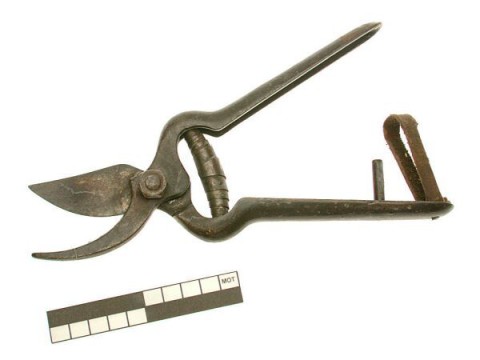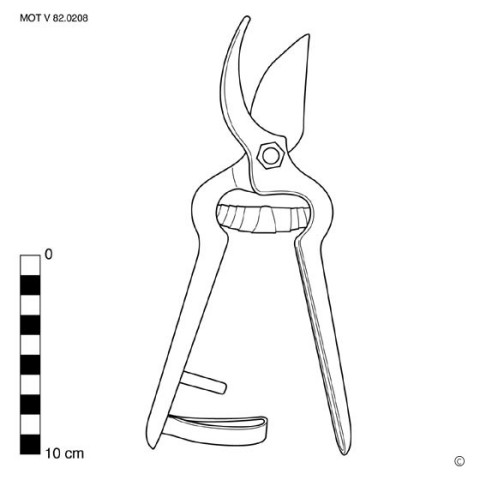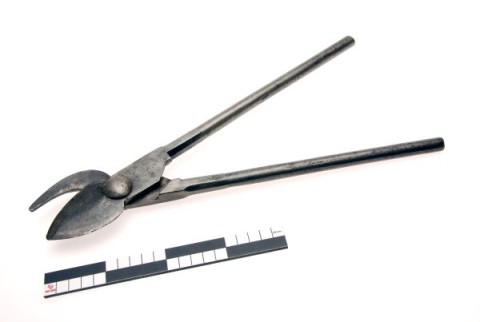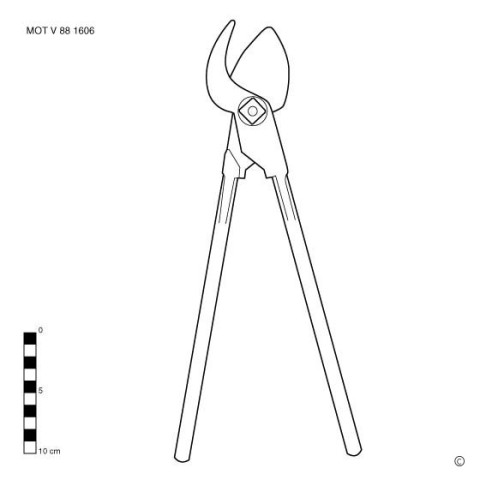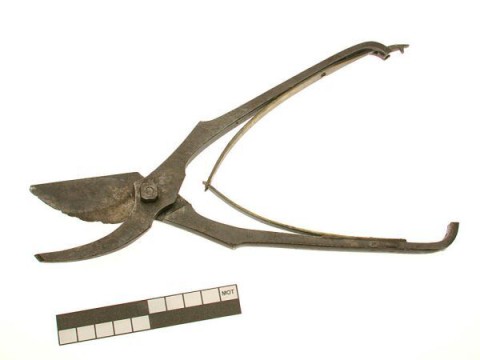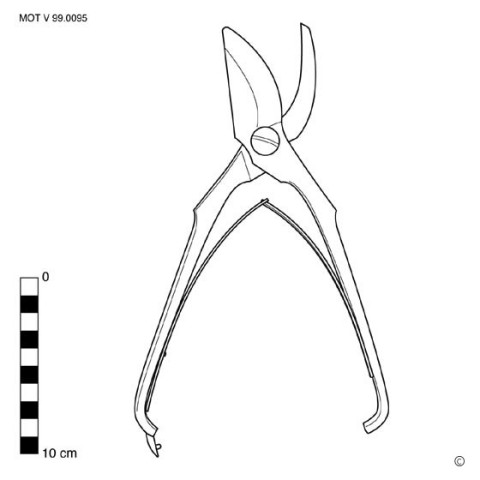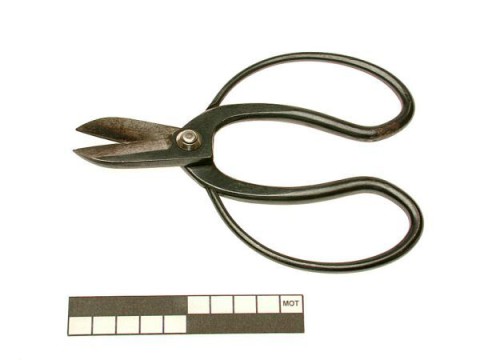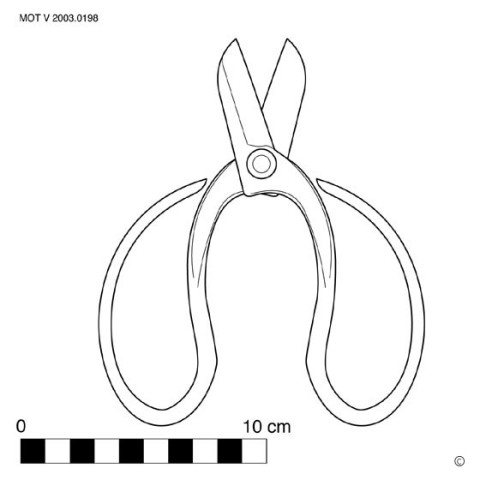Pruning shears
The pruning shears are used to prune shrubs and vines, to pick flowers, etc. Nowadays they usually replace the pruning knife.
It is often used by the basket maker in place of the curved knife to cut the twigs.
The hand tool consists of two levers of the first type, which revolve around a spindle placed about one third of their length. The arms of about 15 cm are straight or slightly bent outwards. To keep the tool in place when not in use, a metal hook or leather ring is attached to the end of an arm; on recent models these have sometimes been replaced by a right next to the hub. During work, the scissors pop open thanks to a spring.
The two curved blades of about 5 cm lie in the same plane as the arms (cf. thorn-hedge shears). One of these is usually thick and blunt today; the gardener must always ensure that the cutting blade is on the side of the trunk to obtain a smooth cut. On some recent models, a notch in one of the blades allows thin iron wire to be cut.
There are also pruning shears with one jaw forming a small anvil. Instead of cutting, the top blade lands on a finger-sized anvil on which the branch rests. This model is especially suitable for pruning away hard, dead branches and stems.
Practitioners of bonsai and ikebana (Japanese flower arrangement) use Japanese pruning shears with wide, short (approx. 4.5 cm) blades and large eyes (approx. 10 cm) that hold the four fingers.
See also the tree pruner and pocket knife. [MOT]
